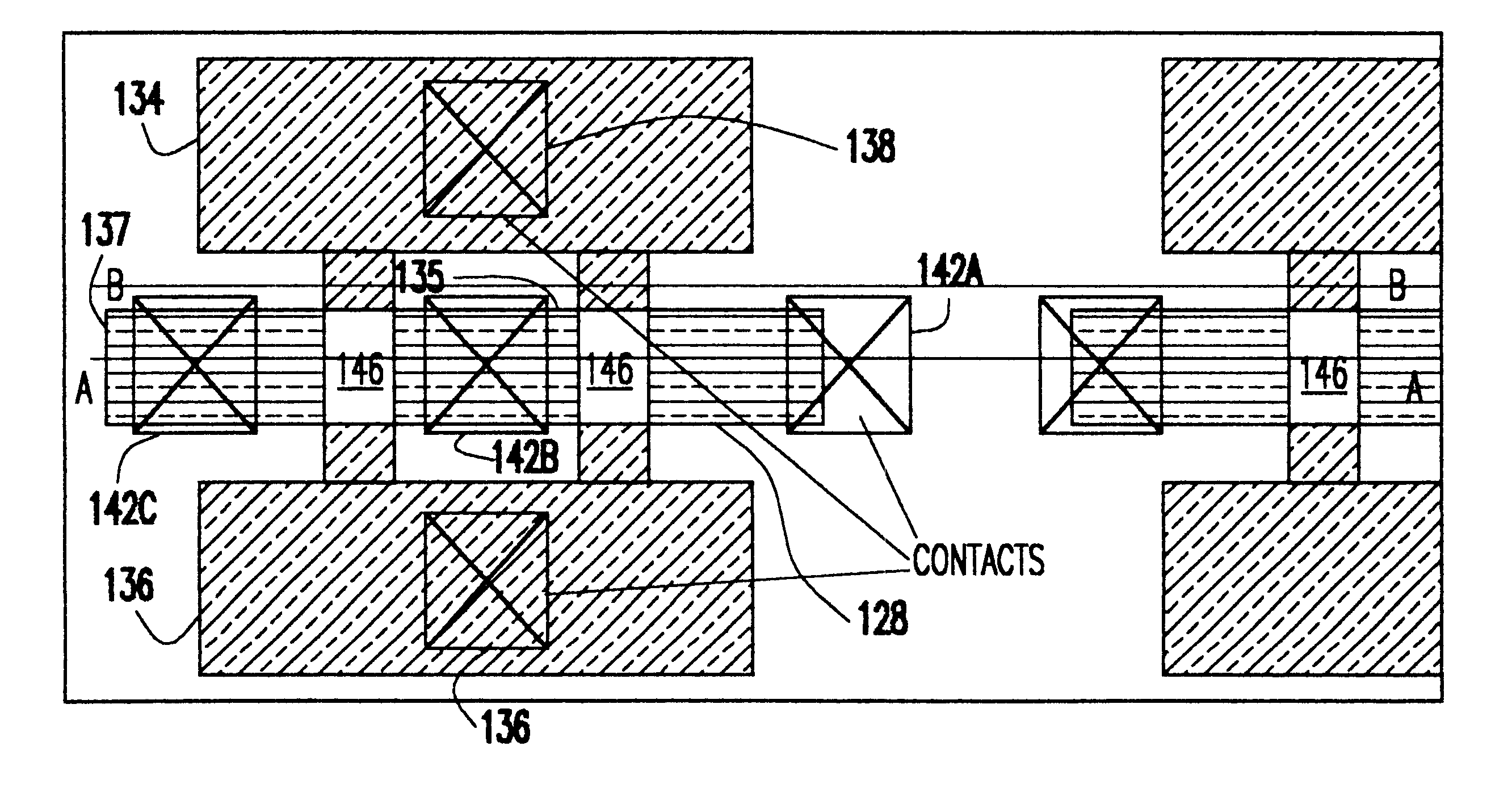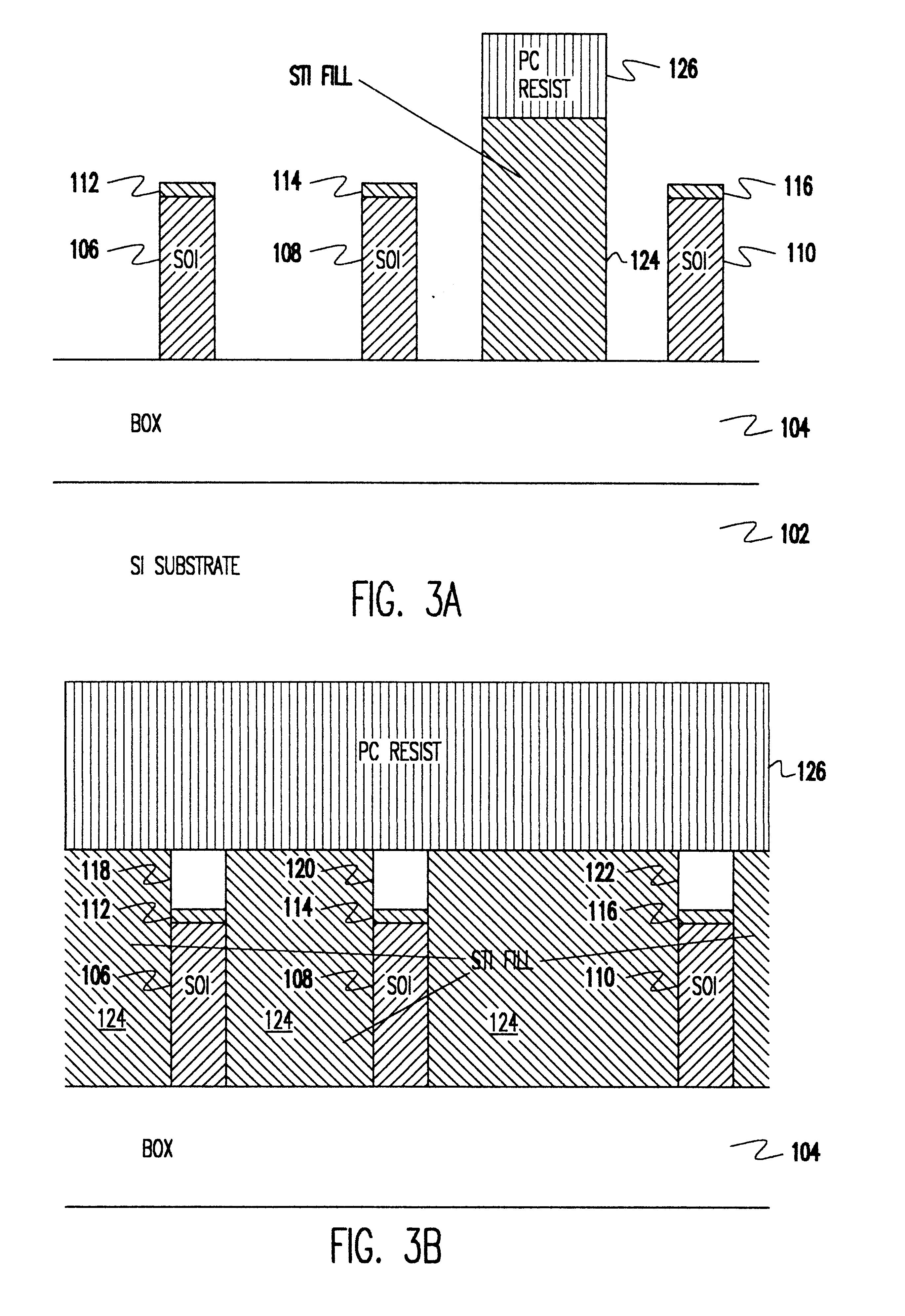Double planar gated SOI MOSFET structure
a semiconductor field effect transistor and double-planar gate technology, applied in the direction of transistors, semiconductor devices, electrical equipment, etc., can solve the problems of poor quality and/or more poorly controlled devices, slow device performance, and difficult fabrication of such structures
- Summary
- Abstract
- Description
- Claims
- Application Information
AI Technical Summary
Problems solved by technology
Method used
Image
Examples
second embodiment
A second embodiment is shown in FIGS. 12, 13A and 13B. In FIG. 12, a dielectric pad films 118, 120 and 122 electrically separate the gate 130 into two electrically isolated portions 135, 137. As shown in FIG. 13B, each portion 135, 137 has a planar top surface and a contact 142a, 142b, 142c on its respective planar top surface. The gate 128 is independently controlled on each side of the diffusion. However, a linear strap of metal, or a patterned layer to link the layers with a silicide can also be utilized. Note that in FIG. 13B the fingered devices become larger because etch stretch of polysilicon would have to be individually contacted unless additional masking layers are used to strap them together.
In the second embodiment, the processing steps are identical to those described up to and including FIG. 2. However, in FIG. 12, as opposed to FIG. 3A, pad films 118, 120, 122 are not etched. In this embodiment, it is preferred that the pad films be 80-150 nm.
FIG. 13A, corresponding t...
fifth embodiment
The fifth embodiment continues from the previous embodiments, but the fourth embodiment will be used as the base. After the gate 128 is formed as above by deposition, polishing and etching, the device implants are completed, spacers 146 are formed and the diffusions are annealed, a layer of highly conformal dielectric fill 148 is deposited, and then polished to the top of the gate conductor. Note that in this case it is preferable to deposit a polish-stop layer 150 (typically a dielectric such as silicon nitride) as a cap on top of the original dummy gate conductor 152 after it has been polished but before it has been etched. Fabrication of this structure is shown in cross section in FIG. 19.
This dummy gate cap layer 150 and the dummy gate conductor 152 are then removed, a gate dielectric deposited and a second gate conductor deposited. This approach is advantageous if either the gate conductor or gate dielectric cannot withstand the high temperature steps required in forming the di...
PUM
 Login to View More
Login to View More Abstract
Description
Claims
Application Information
 Login to View More
Login to View More - R&D
- Intellectual Property
- Life Sciences
- Materials
- Tech Scout
- Unparalleled Data Quality
- Higher Quality Content
- 60% Fewer Hallucinations
Browse by: Latest US Patents, China's latest patents, Technical Efficacy Thesaurus, Application Domain, Technology Topic, Popular Technical Reports.
© 2025 PatSnap. All rights reserved.Legal|Privacy policy|Modern Slavery Act Transparency Statement|Sitemap|About US| Contact US: help@patsnap.com



